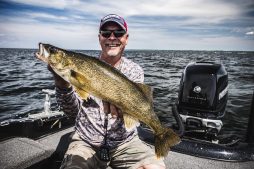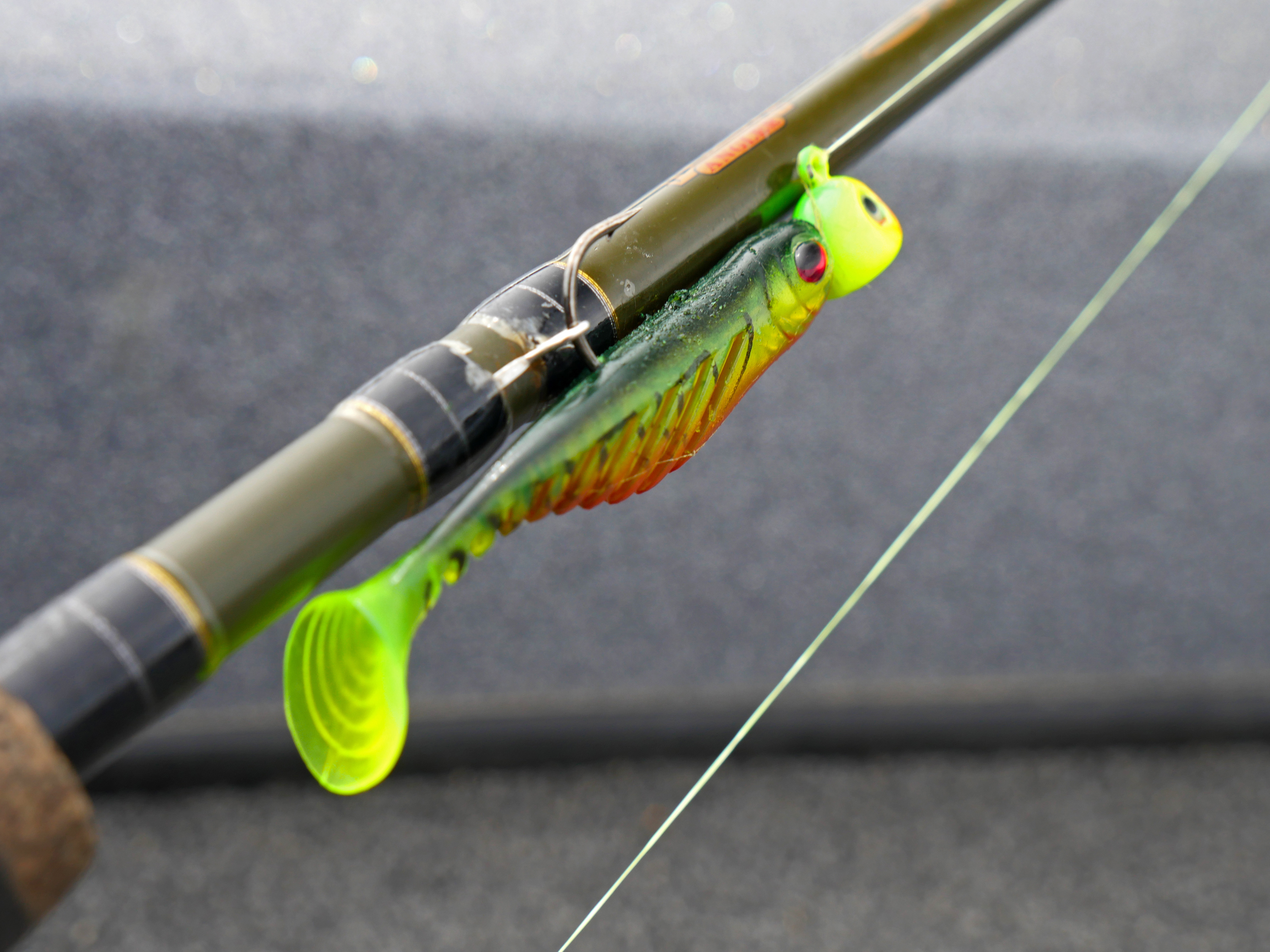
While boot-tail swimbaits are not new, the uses for them keep expanding at a rapid pace. Throughout 2019 we noticed these inexpensive plastics finding their way into every presentation. Keys to mastering swimbaits includes having a variety of jig types to pair with multiple body profiles, actions, and colors for each situation.
Berkley’s lineup of swimbaits highlights the variety of options on the market. The ultra-realistic Champ Swimmer and Sick Fish designs have a match-the-match mentality with a medium-bodied bait. Moving in different directions, the classic Ripple Shad has realistic eyes and colors that match crankbait styles while the flexible Rib Shad and Power Swimmer designs feature a more flexible design in flake and marbled colors. Further, the Havoc Grass Pig has less action for early season angling and the ultra-soft Hollow Belly adds yet another combination.
Casting is the obvious start to this story. Weed lines and rocky shorelines beg for a bait that can be worked quickly in both the horizontal and vertical directions as needed. In some cases, shorelines drop quickly, and a swimbait can be worked with a lift-fall retrieve. As points change into flats a straight retrieve triggers bites. Using the new Fusion 19 Swimbait head in weights up to 1-ounce allows presentations down to 20+ feet with each retrieve. If the water is a bit stained, use a similar weight in the Fusion 19 Underspin jig.
As depths reach 20 feet or more, vertical jigging in reservoirs or lakes with sharp hops initiates the paddle tail vibrations that attract fish. In rivers, the paddle stays activated by the current and can out-fish traditional jigging options, including live bait. If deeper fish want a horizontal presentation or it simply makes sense to cover some ground, strolling at 0.5 to 1.0 mph with the jig just above bottom (similar to bottom bouncing) finds scattered walleyes in the fall and early spring.
If fishing flooded reservoirs, winter ice breaks off standing timber at the water level leaving the treetops to sink in the area. These natural log jams and brush piles keep the average angler at bay but also hold big walleyes and northern pike. Some anglers embrace snags by moving to a Berkley Round Ball jig. This inexpensive rig includes a thin-wire hook that can, in most cases, be straightened enough to let loose from woody cover. The hook can then be re-bent multiple times while retaining its original strength. A key aspect of this strategy is using 15-lb Fireline or Trilene XT tied direct to the jig so the line is stronger than the hook. Plus, the low cost of these jigs makes them inexpensive to replace when lost.
Swimbaits with a slit or trough in the top of the bait can also be rigged texaposed (with the point barely exposed) using a swimbait jig or the Fusion 19 weighted swimbait hook. Although not technically a swimbait, fluke-style lures like the Powerbait Jerk Shad work great with this hook as well. Use this setup with soft-bodied swimbaits like the Hollow Belly and Power Swimmer when weedlessness trumps an exposed hook point.
Smaller swimbaits are more weedless/snag-free when used with smaller hooks on jigs. The jigs still hook fish (even the giants) but the smaller gap seems to snake through wood and weeds easier. Many of the above options have a choice of hook sizes. The Berkley Half-Head jig specifically comes with smaller hooks and fit most baits 3.5-inch or smaller swimbaits like the Power Swimmer. The 1/16-ounce head creates the perfect walleye-style Ned rig. Do not be afraid to cut the first inch off the head of a larger bait and fish it shorter and lighter as needed. The Champ Swimmer is surprisingly effective as a 3.5-inch bait and the lighter weights “float” through cover better than heavier presentations.
Swimbaits on lead core or other trolling options developed recently on the tournament trail. While crankbaits work great, swimbaits offer another option and the single hook does a great job at pinning fish. Use a 3/8 or 1/2-ounce Swimbait Head jig so the lure rides a bit below the lead core.
Lead core can also be used when fishing the trees. Trolling through timber works great with spinnerbaits and we often add swimbaits as trailers for more action. This year we started removing the skirt from the spinnerbait and using only swimbaits with the overhead blade. This makes sure the skirt does not hamper the paddle tail or cover up the markings on the Champ Swimmer. Walleyes respond to the flash and realistic bait swimming above and especially like when the lure crashes through brush and limbs.
Swimbaits rarely require a specific rod option. Since the fish ruthlessly attack these baits an ultra-sensitive jig rod is overkill. Simply matching the rod power with the jig head for each presentation is enough. A good place to start is the Cabela’s Prodigy lineup with the shorter 6’3” medium light offers more control and the longer 7’ version promoting longer casts that cover more water.
As a final hint, swimbaits work much better when their tails stay aligned with their bodies. Most original packaging has plastic support for each bait so try a Berkley Soft Bait Binder or Notebook for storage. When installing the bait on the jig, take extra time to align the body on the hook. The swimbait options will only continue to expand in the coming years because these lures definitely trigger The Next Bite.










